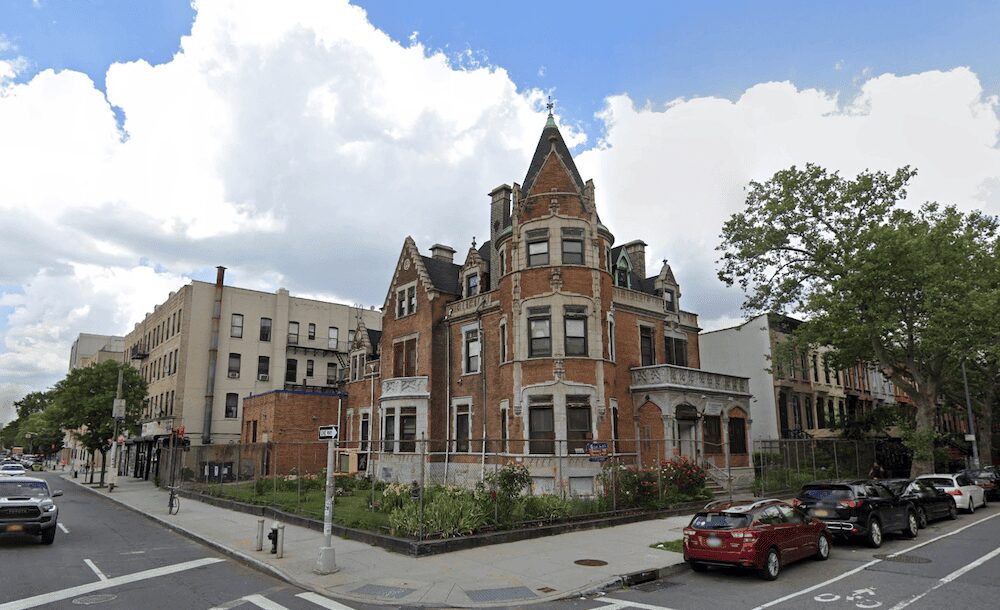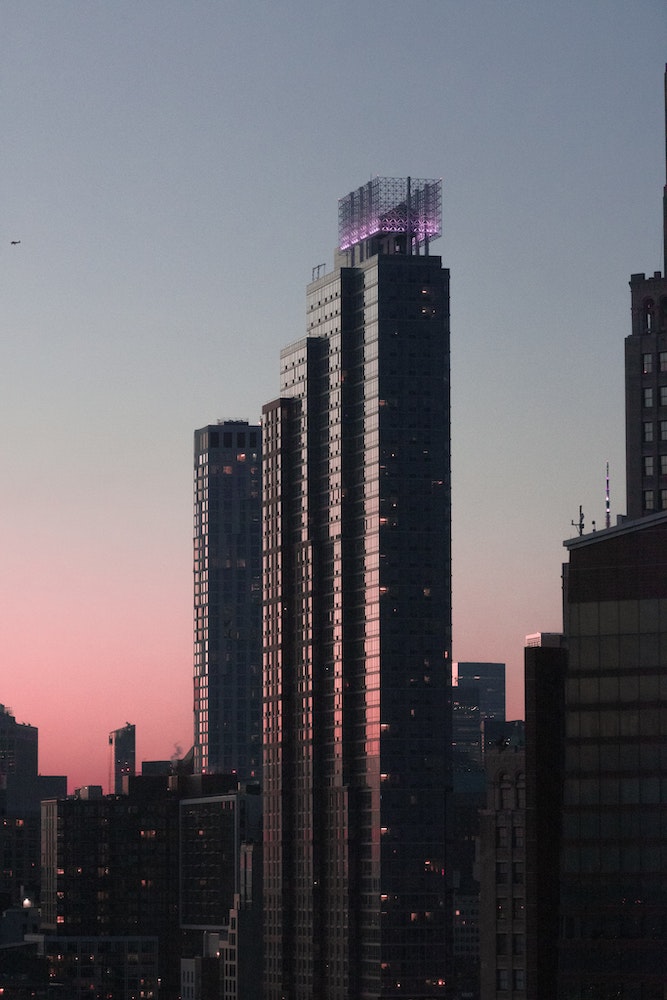As Manhattan is overtaken by spacious luxury condos, tensions rise between urban planners and developers in the City.
Despite working in similar fields, city planners and real estate investors are often at odds with each other. Planners tend to focus on creating more equitable and inclusive real estate options, while developers naturally aim to make a return on their investment.
While not completely contradictory, there are instances where the two priorities cannot coexist. In a place as densely populated as New York City, quality real estate is expensive and scarce, making it harder for planners and developers to work in unison.
Since commercial development’s ‘post-pandemic’ comeback, competition for land in New York City has done everything but slow down. To add fuel to the fire, the average size of new apartments has shrunk, despite exorbitant demand for housing units.
Developers across the country are criticized for their lack of concern for meeting community needs, while planners are denounced for not doing enough to stop them.
But how much can we blame either side?
When from a legal standpoint, developers aren’t doing anything wrong, and planners are professionally bound to roles of ideation and advisory.
History of Urban Planning in the U.S.
Urban planners are tasked with the responsibility of developing land use plans to help sustain communities, revitalize metropolitan areas, and accommodate population growth. In their earliest days, planners dealt with the allocation of land in a vastly different manner, focusing on the domestication of forests and management of river dams.
City planning, as we know it today, emerged in the aftermath of the Industrial Revolution. As people started moving into the city, issues of congestion, poor sanitation, and dangerous construction became important to address. Urban planners soon became advocates for the urban poor, many of which were factory workers working in deplorable conditions.
Many planners openly condemned sweatshops and called for government control of the land upon which factories were built. They also voiced their support for a progressive tax on land values to help fund the social needs of workers, hence property taxes.
Despite their many efforts to protect the common worker from capitalistic ambitions, power imbalances remained, resulting in a complicated relationship between urban planners and real estate developers, a contradiction which persists until today.
The contradictory relationship between planners and developers
As employees of government entities, planners are expected to ensure the community’s well-being and present development plans that benefit the general public. Developers, on the other hand, aren’t necessarily obliged to the community or public well-being. They’re instead focused on making a return on their investment, a natural consequence of operating in a free-market economy.
Despite having competing interests, nothing stops either party from pursuing their objectives. However, problems arise when developers push for local governments to create legal infrastructure needed to support their development plans while fiercely guarding their property rights.
Government control over land in any capacity is usually not well received among developers. This makes it difficult for planners, who work in the interest of the public, to see eye-to-eye with developers, who expect a return on their investment. The government owes itself to the people, not to developers. But, many developers seem to believe that if it weren’t for their developments, cities wouldn’t prosper.
This line of thinking, although not completely flawed, gives way to the pull-push relationship we see between planners and developers today. In theory, planners serve the public, but in practice, planners are bound to developers and their ideas on what kind of development(s) would be favorable to a given community.
More on CitySignal:
Development often charges forward with little to no regard for public opinion
The term ‘developer’ has almost become synonymous with ‘greedy’ in cities such as New York, where development projects tend to disregard the immediate needs of the communities in which they are built.
In a piece published by the New Yorker, former community organizer, Nikil Saval states that development projects often require “catastrophic, violent interventions in the lives of the very people that planners are trying to help, limiting the public’s ability to deposit full trust in developers, or even planners, for that matter.”
Such is the case with the demolition of a 120-year old mansion in Bed-Stuy that left neighbors heartbroken. The historic structure had been a peculiar, yet cherished sight for many Brooklyn residents. Neighbors were in the process of getting the Jacob Dangler House landmarked when the demolition began.
A lifelong resident of the neighborhood told CBS News, “For them to tear it down, it’s awful.” According to several neighbors protesting the demolition, the mansion had rentable value up until the pandemic. It had also recently become the home of a masonic organization, belonging exclusively to African American and African Caribbean women.
Several Bed-Stuy residents were infuriated to find out that the French gothic-inspired mansion was going to be destroyed in order to build yet another condominium building in the city—especially since the property was not vacant nor was it without value.

In a statement to CBS News, a spokesperson from the mayor’s office confirmed that “as the Landmarks Preservation Commission considered this building for potential designation as a landmark, the developer was able to legally obtain demolition permits.’’ This occurred despite continuous efforts from residents and community leaders to delay the work.
CBS reporter, Hannah Kliger, asked developer Tomer Erlich to comment on the demolition, to which he responded, “No. There’s no point.” When Kliger pressed for Erlich to at least respond to the community’s strong opposition to the demolition he said, “The building department issued a permit, we’re doing our job, and that’s it.”
Urban planners have tried to make development more equitable, with minimal success
The concept of zoning emerged in the early days of urban planning as the first real attempt to protect communities against the dangers of unregulated real estate development.
Zoning was intended to counteract racial segregation as much as it was meant to protect the character of existing neighborhoods. In practice, however, zoning remained exclusionary, especially for low-income communities and communities of color.
Modern-day planners have tried to improve the efficacy of zoning by promoting inclusionary zoning, which allows developers to exceed zoning restrictions and even receive subsidies on their development projects if they reserve a portion of their real estate for ‘affordable’ housing.
In 2016, Mayor Bill de Blasio implemented the Mandatory Inclusionary Housing program, requiring developers to “build permanently affordable housing in areas zoned for growth to ensure that all of the city’s neighborhoods will be diverse and inclusive.”
Although the mandate marked a significant move in the fight for affordable housing in New York City, the MIH program has been criticized for its lack of efficacy. According to several community leaders, the program allows developers to bypass zoning requirements and push forward projects that provide little to no benefit to local communities.
Another key criticism of the MIH mandate is the ability developers have to conveniently miscalculate income thresholds, which disproportionately affect black and Latinx New Yorkers. Such was the case with the One45 development in Harlem.
New York City’s Luxury Development Boom
The New York Times dubbed the 2010s as ‘The Decade Dominated by the Ultraluxury Condo.’ It was during this time that developers started to reshape NYC’s skyline by building towering luxury condos all across Manhattan.
The 2010s were also categorized by widespread gentrification in Manhattan’s outer boroughs. The pursuit of cheaper land spurred development in places like Brooklyn, Queens and now, even the South Bronx.

Although well-intentioned and, in many cases, deemed necessary, surges in development drive up the cost of living for local residents and ultimately push them out of their own neighborhoods.
Although COVID halted commercial development in NYC for some time, the industry has made a comeback in the past year, this time with taller towers and fewer units—a trend that has made urban planners especially critical of new development.
Low-density, luxury towers wipe out market-rate housing options
Once they obtain a land’s property rights, developers have the right to tear down whatever was there and build their new project. But, with the MIH program in place, it’s expected that new developments should work to alleviate the housing crisis to some degree.
According to some urban planners, developers are misusing the last of Manhattan’s valuable sites for new construction—sites upon which multiple units could be built. On the Upper East Side and West Sides of Manhattan, soaring towers are replacing buildings that previously housed more units than the new condominiums going up.
The Benson, Naftali Group’s first Upper East Side condominium, houses just 15 units. According to zoning calculations, the development site could have supported up to 83 apartments. Units in the 19-story tower are either full-floor apartments or duplexes ranging from $12.75 million for a 1,770 sq.ft. 3-bed to $35 million for a 6,600 sq. ft. penthouse.

The same development group has plans to demolish 128 rental units located on West 84th Street to erect a 210-foot tower with just 45 apartments. The new tower could potentially house more than 220 apartments, given it will nearly triple the height of the current building.
Similar projects are taking place along Madison Avenue, where developers are building a 13-story building with 11 units and a 210-foot building with 13 units. Zoning analyses reveal that a total of 163 housing units could have been supported between the two towers.
Lesser rental units are being built despite extraordinary rental demand
In 2021, the New York City Housing Vacancy Survey revealed that two out of three households in the City rented their homes, revealing an exceptional demand for rental apartments. Additionally, a report by REBNY found that NYC would need 560,000 additional housing units by 2030 to keep up with the expected population and job growth.
The New York Times reports that from 2010-2020, the Upper East Side lost more housing units than any other community district in the city. According to the Department of City Planning, this reduction in units was caused mostly by demolitions and the combination of smaller apartments to create larger ones.
Developers maintain that the cost of land in Manhattan is too high to build anything other than luxury condominiums. They claim that without more favorable zoning regulations or new tax incentives, diverting from high-end residences would be financially disadvantageous.
Housing proponents counteract developers’ claims by stating that there are steps both the city and state could take to incentivize or simply require developers to do more.
In an interview with the New York Times, Gale Brewer, who is currently a city councilwoman for the Upper West Side and was formerly Manhattan borough president exclaims that, “the idea that these people can get away without building anything affordable is mind-boggling to me. In a city that’s desperate for housing, all kinds of housing, how can you allow a builder to build fewer units?
How do developers get away with it?
Brewer raises an interesting point. The purpose behind the Mandatory Inclusionary Housing program was to force developers to participate in the fight for affordable housing in the City.
How are they getting away with building sky-high condominium towers housing less than a few dozen apartments when homelessness in New York City has reached the highest levels since the Great Depression?
“It’s a very simple answer: It’s the market demand,” says Miki Nafalti, whose firm is building a variety of high-rise condos with minimal units across Manhattan. Following this line of thinking, developers have the right to pursue the best return on their investment.
Georgia Janes, an urban planner who has studied a number of the new towers going up, believes that the City suffers from “a scarce resource of floor area that could be used for housing people, and it is being used, essentially, for people who are super wealthy.”
The truth is that many of the development projects mentioned above are being built on sites that are “as of right,” which means they don’t require zoning changes or public review that could potentially require the builder to at least match the number of units previously built on those same sites. Hence, the loopholes to the MIH program mentioned earlier.
Are Real Estate Developers the Real Urban Planners?
Competing perspectives among developers and planners beg questions of who is at fault, and perhaps more importantly, who controls land development in NYC?
Cincinnati Developer, John Blatchford, believes that although development is guided by local laws, zoning, and building codes, private real estate has more control over urban environments than anybody else and that developers are the ones shaping the way cities look and function.
He says that in more conservative cities like Houston, “it’s rare that private development companies will have urban planners involved unless it is a really big project, which is not always good.”
This capitalistic perspective has long been criticized as lining developers’ pockets at the cost of displacement and gentrification, to which developers respond is a natural cause of the free market economy we live in today.
Author of Capital City: Gentrification and the Real Estate State, Sam Stein, presents the hopeful idea that “although gentrification has become a generalized fact of urban life in the 21st century, we can stop it and build cities that work for all.
Stein centers his book around the contradictory role of the urban planner who operates in a political economy where state powers have turned the devaluation of urban land into a profitable commodity.
Stein essentially makes the argument that perhaps neither the developer nor planner is at fault, but rather the state and local powers for fomenting their contradictory relationship.
He makes the bold claim that to cut the cord between urban planning, commercial development, and gentrification, the city would have to reject the concept of private land ownership—an idea that sends chills down the spines of developers and other faithful capitalists. Is New York ready for that?
Vivian Tejada is a freelance real estate writer from Providence, RI. She writes SEO blogs for real estate, travel and hospitality companies. She's passionate about the future of work and helping Latin American freelancers achieve time, location, and financial freedom. When she’s not writing you can find her at the gym, a family cookout, or at brunch with her girls. Follow her on Linkedin to learn more.



